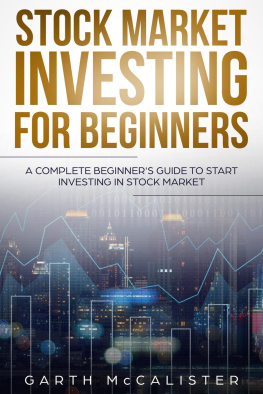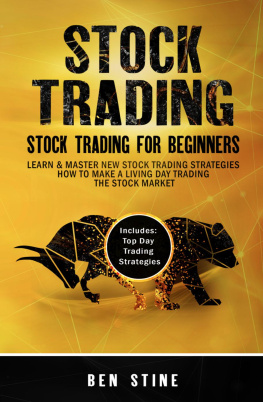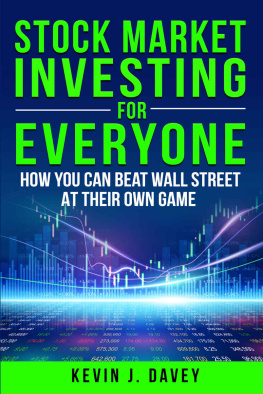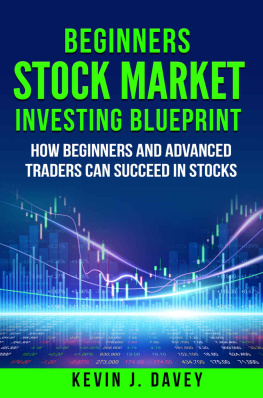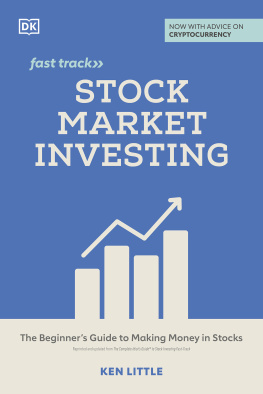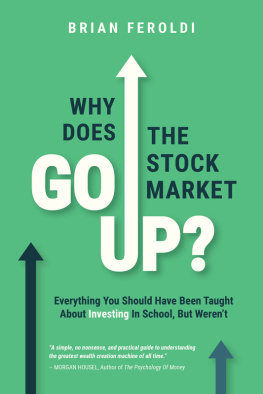Investing in the Stock Market: A Primer
By Ivy Bytes
Contents
2011 Alex H Frey
All rights reserved. No part of this publication may be reproduced, distributed, or transmitted in any form or by any means, including photocopying, recording, or other electronic or mechanical methods, without the prior written permission of the publisher, except in the case of brief quotations embodied in critical reviews and certain other noncommercial uses permitted by copyright law. For permission requests, write to the publisher at
Created by Ivy Bytes
www.ivybytes.com
Introduction
This introduction will briefly .
An Important Caveat
The subject of this book is active investing in the stock market, or "stock-picking". A common mistake that novice investors make is to confuse "stock picking" and "investing." For most individual investors, money devoted to actively selecting individual stocks should be a small fraction of their entire retirement savings. The rest should go into diversified mutual funds or ETFs.
For a broad introduction to the investing field, please see A Beginner's Guide to Investing: How to Grow Your Money the Smart and Easy Way. This short and to-the-point guide explains how you can achieve returns that are virtually guaranteed to exceed those of an average investor, while putting in as little as four or five hours a year thinking about your investments. For multiple reasons, A Beginner's Guide to Investing suggests that most investors would be better off minimizing fees and putting the majority of their investments into a "lock-box" composed of passive "buy-and-hold" strategies that are designed to mimic the performance of the stock market and other major asset classes like bonds, commodities, and real estate.
A major reason for this is the well-documented historical inability of the average investor to earn a return that is greater than that of the overall stock market. As will be discussed briefly in the guide, the stock market is mostly "efficient" in the sense that stock prices are likely to incorporate most information that an average individual investor would know.
However, A Beginner's Guide to Investing also suggests putting 10 or 15% of assets into a "sandbox," which is an account that you can responsibly "play" with by actively picking the stocks that you want to own. This is the subject of this guide. In Finance terms, A Beginner's Guide to Investing was mostly about achieving "beta" - or market-average returns. This book is mostly about achieving "alpha" - or beating the stock market through picking individual stocks that out-perform the market averages. While getting alpha is several order of magnitudes harder than getting beta, it is the opinion of this briefing that investors that know that know their limitations and think strategically about how they want to make their investments have a good shot at achieving market-beating returns.
How to best use this guide
Ivy Bytes' series of guides add value versus existing books by getting you up to speed on a subject faster than anything else in the market. In this spirit, you should not read any section that you are already familiar with.
Every chapter begins with a one or two sentence overview of what is going to be discussed. If some of this material looks like something you already understand, skip to the sections that are more relevant by clicking on the in-text links.
If you feel that you would not gain anything from reading the chapter at all, you can quickly jump to the next chapter using the in-text link.
If you want to dive further into a topic, you can click-through in-text links directly on your e-reader, tablet, or smart phone.
- The Further Reading section at the end of each chapter contains a list of the best sources of more material on the topics covered in the chapter.
How this guide was made
Our process for creating Ivy Bytes guides is simple:
We collect the information that you previously would have found by doing multiple google searches, reading hundreds of pages of books, and analyzing countless articles
We analyze this trove of information and pick out the most pertinent, important, and well-supported pieces of it, the kinds of things that everyone that is fluent in a topic should understand.
- We organize this material into 20-40 pages of easily-digestible content.
will conclude with presenting a game plan that individual investors can follow to have a good shot at achieving returns that exceed those of the overall stock market - the goal of any stock-picker.
If you like this guide, please consider leaving feedback on Amazon, connecting with us on Facebook, Twitter, or email, and checking out our other books.
Alex Frey
November, 2011
Twitter: www.twitter.com/ivybytes
Facebook:www.facebook.com/IvyBytes
Web: http://www.ivybytes.com
Email:
Books:
A Beginner's Guide to Investing: How to Grow Your Money the Smart and Easy Way
Herman Cain: Everything You Need to Know
Chapter 1: What a Stock Really is, and the Nature of Ownership in Modern Capitalism
This chapter will look at
What it really means to "own" shares of McDonalds
When you need money to purchase something that you currently cannot afford - such as a car, house, or new appliance - you can go to a bank and take out a loan. In return for receiving a loan from the bank, you agree to make an interest payment every few months until you have paid off the loan in full. When a company needs to purchase something that it cannot afford - like a new factory or piece of equipment - it has the additional option of bypassing a bank and going directly to investors who have extra money that they would like to earn a return on.
There are two ways that an agreement between the company and investors can be structured so that each gets what it wants. The first option is a bond. A bond is similar to a bank loan in that the company agrees to pay the investors an interest payment every period (usually every six months), and then to repay the original loan amount in full at the end of the bond's term. The second option is to issue stock.
Issuing stock involves selling partial ownership of the company to investors. If the company is successful in its investments, it will earn additional profits in the future. After investing a portion of these profits back into the business to build even more factories or buy even more equipment, the company may split the remaining earnings among all the owners, in equal proportion to the percentage of the company that each owns.
A key difference between stocks and bonds is the risk/reward equation for investors. With a bond, investors' upside is limited - the best they can do is receive fixed interest payments and get their money back at the end of the term. With a stock, their upside is unlimited, because they can share in the profit growth of the company.
The company's view, of course, is precisely the opposite. For a company, issuing stock may be a more flexible and less risky source of funding if it is planning a project that may have uncertain results. If a project is unsuccessful and a company has taken out loans (or bonds) to finance it, the company may not have enough cash to pay back its loans. It may have to declare bankruptcy, and in effect be taken over by its creditors (the purchasers of the bonds). On the other hand, if the company issued stock to finance the project, it could just stop paying any dividends for a few years. This is very important - bond holders expect to get their money back from a loan on a fixed schedule, but stock holders accept the chance of losses in exchange for the potential for higher returns . This makes stocks more risky for investors than bonds, but less risky for the company issuing them.


